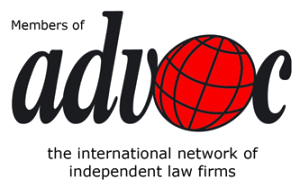1. INTRODUCTION
Insolvency can be a useful tool for businesspersons and legal entities to address unstainable debt. Whilst Cambodia promulgated the Insolvency Law in 2007 as part of its general legal reforms to comply with World Trade Organization (WTO) standards, actual use of the law to date has been limited. However, the Law does provide the rules and framework for insolvency proceedings and governs both foreign and domestic business people and legal entities that own assets in the Kingdom of Cambodia. Certain financial entities are governed under industry specific legislation rather than the 2007 Law: namely the Law on Insurance, the Law on Banking and Financial Institutions and the Law on Issuance and Trading of Non-Government Securities. Due to the economic strain caused by the Covid-19 pandemic, use of the Insolvency Law in Cambodia may increase, and this newsletter will set out the procedure for insolvency proceedings under it.
2. INITIATION OF INSOLVENCY PROCEEDINGS
The term “insolvency” refers to the situation where the debtor has ceased meeting its obligations to pay and is declared “insolvent” by the court. A foreign or Cambodian person or business entity that owns assets in Cambodia could be subject to insolvency proceedings under the law, and failure to pay a debt of KHR 5,000,000 (est. US $1,250) is grounds for initiation.
A petition to the court to open insolvency proceedings may be made by either the debtor themselves, a creditor, the Director of Companies or the public prosecutor, and must contain a description of the circumstances of the petition and evidence of the grounds for its filing.
The debtor themselves are required under the law to petition for insolvency proceedings within thirty (30) days should they fail to meet their required obligations. Failing to discharge this duty through either intention or gross negligence may result in personal liability to the debtor’s creditors for damages, and those damages shall be included in the claim against the debtor.
The petition to open the insolvency proceedings by the debtor shall be heard within fifteen (15) days of filing, and within thirty (30) days should it be petitioned by another party. Should the court be satisfied upon hearing the grounds for the petition, it shall open insolvency proceedings, appoint an administrator, announce a date for the opening creditors’ meeting and set a deadline for the submission of the proof of claims. The court is able to dismiss the petition at this stage, should it believe sufficient grounds do not exist. The petitioner must reimburse the debtor for their reasonable legal costs where the decision is taken for a lack of grounds, and is also liable for damages if the court decides the petition was frivolous or malicious. In the event that the assets of the debtor would be insufficient to cover the court’s fees and costs, and the remuneration, fees, and expenses of the administrator, the petition to open insolvency proceedings will also be dismissed.
3. EFFECT OF INSOLVENCY PROCEEDINGS
Once the proceedings have been initiated by the court ruling, no other action can be brought against the debtor or the estate by any creditor. The opening of the proceedings creates the estate of the debtor, comprising all assets, rights and claims of the debtor. There are certain exemptions from the estate such as salaries up to KHR 200,000 per month and the primary residence of a natural person debtor, provided the market value does not exceed KHR 20 million.
The court-appointed administrator will have full control over the debtor’s assets including, but not limited to, the power to represent the debtor and manage the debtor’s business for the purposes of the insolvency proceedings, to receive all assets of the estate, to sell any unsecured assets, to prepare the list of claims, to organize the creditors’ meetings and to employ agents to assist in the performance of his duties. To enhance and safeguard the estate, the administrator may continue with contracts that have not yet been fully performed by the debtor or the counter party.
In addition, the administrator can petition the court to declare certain transactions to be void, such as those with the intent to defraud by placing assets beyond the reach of creditors. This includes those where no consideration was received, or those where the debtor’s obligation far exceeded the consideration.
4. CLAIMS AGAINST THE ESTATE
All proof of claims shall be submitted to the administrator in writing within fourteen (14) days of the opening of insolvency proceedings with the required information related to the claim including but not limited to the legal nature and cause of the claim, the time when the claim arose, the amount of the claim, and priority of the claimant class. If proofs of claim are not filed within the deadline established for proofs of claims, they will be considered inadmissible. The administrator shall assist the claimant(s) with the required formalities and ultimately produce a claims list detailing all claims in a standardized manner that shall be free for viewing by the public.
The estate shall then be used to satisfy all admissible claims against the debtor as well as administrative claims.
However, the following claims are not considered as admissible:
1) interest accruing on claims from the date of the opening of the insolvency proceedings;
2) costs incurred by creditors by reason of their participation in the insolvency proceedings;
3) fines, administrative penalties and other incidental legal consequences of a criminal or administrative offence which obliges the debtor to pay;
4) claims for which no consideration was owed by the debtor in return;
5) claims for the repayment of a loan made to the debtor by a person holding directly or indirectly not less than ten percent (10%) of the equity capital of the debtor, or recourse claims against the debtor for a loan guaranteed or secured, or caused to be guaranteed or secured, by such a person. If the debtor is a partnership, the claims in this paragraph shall apply only when all general partners of the debtor are companies;
6) claims for recourse which co-debtors or guarantors may have against the debtor if they satisfy a creditor’s claim;
7) claims for which the proofs of claim were filed after the deadline established for the filing of proofs of claims;
8) subordination of claims for which ineffective in insolvency proceedings has been agreed between the creditor and the debtor; and
9) interest on claims of the aforementioned kind.
5. THE CREDITORS’ MEETING
At the opening creditors’ meeting, the administrator shall indicate whether there is the possibility of maintaining the debtor’s business, in whole or in part, shall report on the general situation of the debtor’s business, the causes of the current situation, and the chance of a plan of compromise being implemented, and its effects on the creditors.
The following shall occur at the creditors’ meetings:
- The creditors shall decide, based on the administrator’s report, whether to continue the insolvency proceedings;
- The creditors shall vote on any plan of compromise proposed;
- The claims list shall be verified; and
- The creditors may also decide on other matters related to the insolvency proceedings.
Approval of the claims list shall be made at the creditors’ meeting. The validity, amount, secured status and priority of claims can be challenged, and a judgement on such must come from the court. The administrator will finalize the claims list once the court has passed judgement on the disputed claims.
The opening creditors’ meeting may be adjourned to allow a proposal for a plan of compromise at a subsequent creditors’ meeting, but not by longer than 60 days.
6. PLAN OF COMPROMISE
The court can decide to liquidate the estate of the debtor upon its own motion, however to possibly avoid liquidation, a debtor, or its creditors, may initiate a plan of compromise. A plan of compromise must be submitted to the court at least seven (7) days prior to the relevant creditors’ meeting. The plan of compromise can be any approach to settling the insolvency, including, but not limited to:
1. Cancellation of any claim in exchange for equity or shares in the debtor’s business;
2. A revision of the scheduling of the payment of any claim;
3. The continuation of the debtor’s business by the debtor or another person; and
4. The sale or disposition of any asset of the estate, or the distribution of any asset among those having an interest in the asset.
Approval of the plan of compromise shall come at the relevant creditors’ meeting. The creditors are grouped into one of three categories: secured claims, state taxes, and those with unsecured claims. To pass, the plan of compromise requires the approval of the following:
a) Each class of creditors, through the affirmative votes of creditors in each class holding not less than three-fourths of the claims of all creditors who are present at the meeting; or
b) At least one class of creditors, through the affirmative votes of creditors in the class, holding not less than three-fourths of the claims of all creditors who are present at the meeting.
Approval of the plan of compromise shall come at the relevant creditors’ meeting. The creditors are grouped into one of three categories: secured claims, state taxes, and those with unsecured claims. To pass, the plan of compromise requires the approval of the following:
- Voting was carried out in accordance with the requirements of the law;
- All creditors in any given class are treated equally, unless there is written consent to be treated less favorably;
- Each creditor will receive satisfaction on terms no less favorable than that which they would receive under a distribution made in a liquidation;
- No creditor will receive more than the full amount of its claim;
- No payments related to income, dividends or equity will be made to any shareholder until the final payment of entitlements of the classes of creditors whose claims have been affected by the plan of compromise; and
- No maintenance greater than the amount of maintenance ordered by a court will be paid to a debtor who is a natural person, or to a general partner of a debtor which is a partnership, until the final payment of the entitlements of the classes of creditors whose claims have been affected by the plan of compromise.
The liquidation proceedings shall be terminated once the court gives approval to the plan of compromise, and the period of implementation for the plan is two (2) years.
In the event the plan of compromise is not being implemented properly, a court proceeding may be brought by the creditor(s), debtor, public prosecutor or court administrator to liquidate the estate.
7. SATISFACTION OF CLAIMS
Should a plan of compromise not find approval, when it comes to the satisfaction of claims, the liquidated estate shall satisfy creditors in the following manner:
- Employees, administrator’s remuneration and fees, administrative fees & court fees;
- Employees, administrator’s remuneration and fees, administrative fees & court fees;
Secured Creditors;
- The claims list shall be verified; and
- Secured Creditors;
- State Taxes;
- Unsecured Creditors.
As previously mentioned, there are industry specific rules under the banking, insurance and securities laws, and these contain a different ranking of creditors to that of the Insolvency Law for those entities subject to them.
As expressed in the Civil Code, Cambodian Law allows for the creation of security interests. The Law on Secured Transactions, promulgated on 24 May 2007, has further developed security interests, and parties are able to state under which law the security interest has been created under. Security can be over either the entire estate of the debtor, or over a specific asset. These created security interests allow a creditor to become a secured creditor, and therefore, once insolvency proceedings are established, they are ranked higher and more likely to receive the debt owed.
All assets of the estate shall be converted into cash by the liquidator, and the distribution of the proceeds shall be distributed within six (6) months of the commencement of the liquidation.
The liquidation terminates the insolvency proceedings. A final creditors meeting shall be held to adopt the final account of distributions, and the debtor shall recover the right to dispose freely of any remaining assets in the estate. If the debtor is a company, the company shall be deemed to be dissolved, unless all claims have been satisfied fully.
The debtor can apply to the court to be released from all admissible claims which were not satisfied, unless, amongst other possibilities, the debtor was convicted of a crime involving dishonesty or fraud in connection with the insolvency or the debtor had been released from unsatisfied claims in other insolvency proceedings in the last ten (10) years. Any creditor who was not fully satisfied may make an application to the court to resume insolvency proceedings within one (1) year of the termination of the insolvency proceedings, however the court will only intervene where amounts allocated for contested claims are released or assets have been discovered that were not taken into account in the original insolvency proceedings.
8. CONCLUSION
Cambodia’s Insolvency Law is in line with international standards promoted by the WTO. Insolvency proceedings can help a debtor to clear overwhelming debts and even allow a business to get a new start through restructuring all debts in a single instance via a plan of compromise. The creditor(s) will benefit by such a proceeding by having a pathway to debt recovery, however there may be limited recovery of the full debt obligations. While not a new law, the Insolvency Law has yet to be widely used as a way to clear overwhelming debts, yet there is a sufficient legal framework in place in Cambodia to handle such insolvency cases. Given the extreme economic turmoil brought about by the Covid-19 pandemic, more use of the law could unfortunately be on the horizon.
The information provided here is for information purposes only and is not intended to constitute legal advice. Legal advice should be obtained from qualified legal counsel for all specific situations. For more details or any question related to Insolvency in Cambodia, please contact our professionals via [email protected].







